-
Content count
1,467 -
Joined
-
Last visited
-
Days Won
13
Posts posted by tipz
-
-
Fuck !!! That sucks Myco.
I wonder if it came about from postal intercepts, or maybe using SAB or something more obscure ??
Were any charges laid ? I wonder if this is the case in south australia too ?
-
 1
1
-
-
-
-
PM your details Sabry
-
edit
-
edit
-
WAY keen !
I am confident I have the skills to handle this and would love the oppurtunity. Thanks Smigz and Endo !!!!! ( pm'd )
-
sale closed
-
 1
1
-
-
http://cdn.preterhuman.net/texts/drugs/nansnook3c/tek/TrichocereusGrowersGuidemod.html
Some excerpts :
Trichocereus cacti grow in an area not that far from the equator and consequently are not used to the duration of light found in more temperate summers. The seedlings will respond well to 12-14 hours of light. It is important to remember that cacti breath at night and then store the Co2 in the form of acids for use in photosynthesis during the day, they do not do well with the longer periods of light that other plants thrive in. The dark period must be somewhat cool as well being in the mid 60’s for an ideal. Trichocereus cacti may receive too much light in temperate zones when placed in a full sun position particularly at high elevations, in these cases they should be placed in partial sun locations.
In nature the Trichocereus cacti grow in a soil rich in trace elements such as calcium, copper, iron, manganese and magnesium many of which play key roles in enzymatic pathways and function, thus these trace elements can be important factors in alkaloid biosynthesis. Excellent sources of trace minerals include seaweed preparations, chelated compounds and complete fertilizers such as the aforementioned Peters 20:20:20. Dolomite limestone is rich in both Ca and Mg and is a good ingredient in cactus mixes. Hard water will provide enough Ca for growth but more calcium may be needed for optimum growth. Bone meal is is great organic fertilizer for cacti that provides Ca, P and often N as well.
Some work has been done recently with foliar feeding of cacti, in particular Trichocereus. Their CAM mode of respiration and photosynthesis means that the stomata of the cacti are open at night and closed during the day. Low dilutions of peters 20:20:20 (1/4 tsp per gal) may be sprayed onto the cacti around midnight or so. The plants do well being foliar fed twice weekly when stomata are open, remember to rinse them if they have had no overhead water. The result is a cactus that almost glows, the glaucous coating becomes more prominent and the trace elements of the fertilizer (peters) help the cacti produce its defensive alkaloids. A hormone rich seaweed extract may be of use in foliar feeding as well. Indoors or in the greenhouse Co2 enrichment would also be done at night. An ideal Trichocereus indoor grow would have hot day temperatures in the 90’s or so and cool nights in the 50-60’s, the cool nights would have Co2 enrichment and an overhead spray system for foliar feeding being cautious to avoid an excess of moisture that may promote rot.
Trichocereus like to have somewhat cool roots, which can be a problem in containers in sunny locations. One method of providing a favorable environment for the roots is the double pot system. The system is to simply obtain some black plastic nursery style containers, two for each plant; one is buried in the ground and the cactus is planted in the other pot, which is then set inside the first one shielding it from the hot sun. The rims of the pots can be hidden by landscape bark or stone for a neat look and the cacti are easily removed from the yard for over-wintering. When using plastic containers the mix must be very well drained, I like to use lava rock as 1/3 to ½ of my mix in larger containers and I make sure that none of the holes are obstructed with regards to draining. Limestone gravel, expanded clay products and pumice are all good amendments for drainage and have been reported to be preferable to lava rock and perlite. Large wooden planters can also be ideal containers if they can be carried are well drained and are large enough to allow cool moist soil. It should be noted that some Trichocereus like T. bridgsii are less tolerant of constantly moist conditions than T. pachanoi thus the cultivator must be mindful of the water requirments of the species being grown.Long nights, cool temperatures, low N and low water seem to be central to flowering in containers. Root bound plants may flower better. It is important that the plants stay in a single location during the flowering fruiting period, this may require some careful planning as that dormant locations are often different than growth locations. A HPS light in a dark cool basement might be used as the light source, while the temperatures can get fairly warm during the day it is important that they be quite cool at night, weeks of lows around 35 F should be ideal.
Document and label your cacti to ensure that different genotypes are used for pollination. Hybrids should be easily made between T bridgsii, T. pachanoi, and T. Peruvianus though playing with fertilizing other cacti genera with Trichocereus pollen should be done for the sake of experimentation. Genera that might be crossed with Trichocereus include Cereus, Matucana and Selenicereus
Breeding ideas for Trichocereus
Selenicereus grandiflorus X Trichocereus pachanoi
Selenicereus grandiflorus is a climbing epiphyte with a large white sweet scented nocturnal flower. The morphology of the flower is fairly similar to that of T. pachanoi, likewise it opens but once. Selenicereus grandiflorus is widely known for its chemical properties, it is known to have a digitalis like effect. Hallucinations, mental confusion and delirium have also been associated with the ingestion of large amounts. Synonyms for this cactus include Cereus grandiflorus and the common name “Queen of the Night”. Selenicereus is used for grafting younger and smaller scions, and seems to flower more freely than T. pachanoi. Hybrids between the two cacti should be good for grafting and have superb flowers.
Pollen from T. pachanoi should be dusted upon the stamen of S. grandiflorus and S. grandiflorus pollen may be collected and used to fertilized T. pachanoi. The Selenicereus is likely to have many more flowers per plant than T. pachanoi so the cultivator should employ this by attempting to fertilize every flower with the Pedro pollen. The two cacti may not interbreed freely so by using every flower the chances of success are better and if they do cross easily the cultivator is ensured enough seed to look for desirable phenotypes in the F1 generation.
If the F1 seeds make fertile plants then the most desirable phenotypes may be crossed again or used to fertilize other genera. If the F1 plants are sterile they maybe reproduced via cuttings.
The slender climbing floriferous Selenicereus and the columnar nearly spineless Trichocereus might have some interesting hybrids. Phenotypes to look for might include a prostrate cactus with adventitious roots, a more freely flowering slender columnar cacti, a stout epiphyte requiring less humidity than Selenicereus, and anything with hybrid vigor. The chemistry of potential hybrids might prove to favor entheogenic virtues, holistic virtues or both.
( plus some other very interesting tipz)
Enjoy
-
 8
8
-
-
The mother plant flowers so profusely That I could easily cross pollinate it with a vast array of different and interesting trichs.
If anyone could contribute to this endeavor by sending me any pollen they have between now and next flowering season ( Im in SA ) It would be such a help.
Unfortunately old miss macro is the only trichocereus on the property and is not self fertile. I have a few trichs that should be coming into flower this year that will make interesting candidates to do some both way crosses with ( anything really glaucous, chunky, fast growing and vibrant would be desirable )
So all you experienced cactophiles with stored pollen or pollen next season - Im calling on you. Of course you will get many many seeds of the resulting hybrids in return. Obviously If anyone would like some pollen from this clone I would be happy to collect and send on. Ill put up a reminder post in trade when the time is nearer.
Anyhoo, this way I could send you guys across the Tasman a heap of seed too
-
Dont think like that mate, I was happy to do it. I had a friend help me with the sorting and bagging. envelopes were a couple of bucks, stamps where free, baggies cost bugger all and spreading those genetics round - priceless
This mix has a little sifted premium potting mix, some coarse sharp sand, a little perlite and some crushed biochar ( not my normal mix, but all I had on hand when the urge to sow overtook me ). Im feeding them some very dilute HQ organic hydro nutes and have them on an 18/6 light cycle.
Ill keep you updated with photos and send you your choice of pups when they all start to show their traits.
-
 2
2
-
-
what was their reply zen ?
-
“Why of course the people don’t want war … But after all it is the leaders of the country who determine the policy, and it is always a simple matter to drag the people along, whether it is a democracy, or a fascist dictatorship, or a parliament, or a communist dictatorship … Voice or no voice, the people can always be brought to the bidding of the leaders. That is easy. All you have to do is to tell them they are being attacked, and denounce the pacifists for lack of patriotism and exposing the country to danger. It works the same in any country.”
- Hermann Goering, Nazi leader.“The easiest way to gain control of a population is to carry out acts of terror. [The public] will clamor for such laws if their personal security is threatened”.
- Josef Stalin -
Beauuuutiful!!! One of the few times where I actually wish I lived in Australia just so I could obtain a cut
Stunner.
I could always send a sly little pup over Bogfrog if It is the genetics your after. Got a few small ones around the size of a tennis ball i reckon I could get through.
your game with those thongs!
the mother-plant must be chunky as, looking forward to the pictures of it.
very nice plant,
I never learn bro, I was in them while I was cutting and loading it all too
( only a few spines that needed removing though )
-
Im in Goolwa getafix.. Pickups will be much cheaper as it is just so much easier. Pm me if you want to work something out. I wouldn't mind offloading a few of the 2m plus lengths to South Aussies.
OK - no more trade talk in this thread or i might get told off
-
I went up to the farm last night and took a whole heap of cuttings from the Tipz macro clone. I estimate about 25 metres of goodness.
The longest tip cut is 2.9 metres. The fattest log is 50cm in diameter ( 15cm wide ) Some really beautifull blue glaucous powerful cactus right here.
Ill be putting some up for sale in the trade thread as soon as I make individual photos and prices. But thought Id show you some photos first to stir up some interest. ( I also want to clear all pending trades before committing to more ).
I have some photos of the mother plant in flower to add later, She is over thirty years old, stands at around four metres tall and pretty much just as wide at the base. A very special plant indeed ( my favourite )
thanks for lookin

-
 13
13
-
-
OK, all fully packed stamped and addressed. Will be on the way By Monday morning.
Sorry about the wait guys ( all other trades, like the oxfam 4 prize and your variegate GOT are good to go too )
Here is a pic of some of the seeds I sowed from the selection. There has to be a few thousand seedlings, so as soon as things get crowded and they are big enough to survive a trip in the post I will undertake another big giveaway.
Happy days
-
 12
12
-
-
Love some Interbeing
Will pm in a bit
-
 1
1
-
-
Eulychnia Castanea var monstrose :
Description: This odd plant is known in cultivation under quite a lot of different names (among them, "spiralis", "varispiralis", "spiraliforme", "mostruosa", "monstrose", "monstrous" ) It is a variable cultivar of which we can distinguish at least four basic growing forms:
-
Columnar monstrous form: Characterized by a lumpy-bumpy monstrous surface, this is the more common form, about 60-75% of the new branch shows this monstrous morphology.
-
Columnar discoidal form: Characterized by green discs placed one on top of another in a heap. Only 20-30% of branches develop the typical discs.
-
Columnar spiral form: Characterized by curly, whirly spiral growth that can be equally dextrorotatory or levorotatory, this form is very appreciated by collectors but comparatively rare (about 5-15% of shots shows this admirable feature)
-
Crested form: Characterized by fan-like sculptural shapes comprising mix of the previously types, this form is very rare and prized.
NOTE: All this form are only growing variant of the same clone, each new branch must show one (or a mix) of the four growing mode and each plant is unique and different.
-
 2
2
-
-
It's a new form. it shows Semi monstrose and cristate traits.
-
I bid $ 1000
-
 3
3
-
-
-
-
I'm paying postage for my prize.


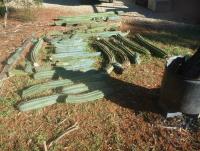
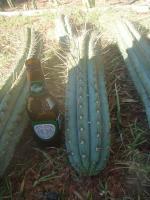
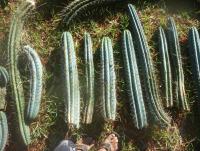
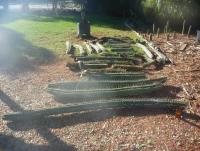
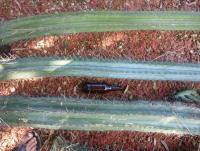
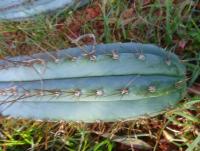
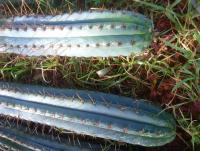
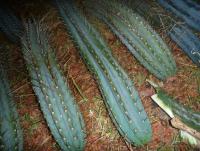
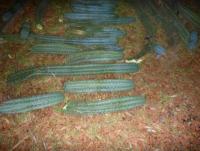
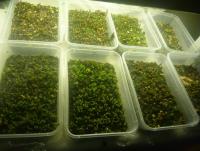
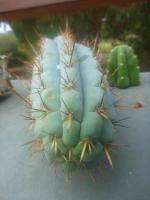
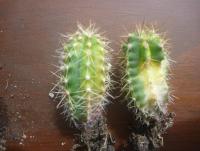
Lophophora williamsii illegal in W.A.
in Legal Matters
Posted
Im not doing any more sales after hearing this... and I'm relocating my plants. This is a real precedent about to be set here to my knowledge.
Did they search your whole property ?